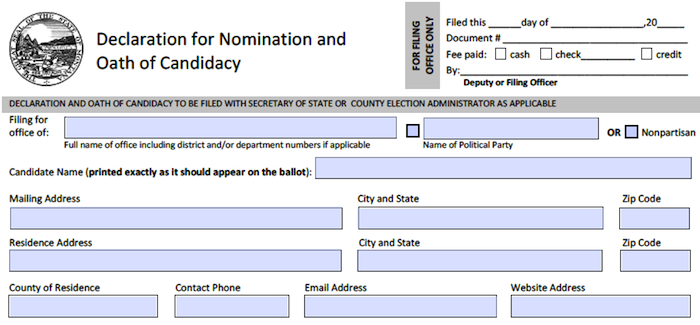16 March 2016
MT SecST’s online list of candidate filings is not satisfactory
Looking for a list of the candidates who filed for the Montana legislature this year? You’ll find it at the website of Montana’s secretary of state. You can even download the list in a comma separated format (CSV) that can be imported into a database or spreadsheet.
But the downloadable version is not formatted according to best practices. Here are a few examples:
- Names. First, middle, and last names are combined into a single field. There should be five fields for the name: prefix, first, middle, last, suffix (such as MD).
- Office. The legislative chamber and district number are combined in a single field; for example, Senate District 10. The chamber and district numbers should be in separate fields.
- Incumbency flag. The online version of the list places an asterisk in front of the name of incumbents who filed for re-election. Inexplicably, he CSV version does not.
- Withdrawal date. There isn’t any. The date a candidate filed is provided, but the date that candidate withdrew is not listed. This omission matters because not all candidates withdraw on the day they filed.
- County. Another missing field. There actually should be two county fields: one for the county or counties in which a district is encompassed, and one for the county in which the candidate’s city is found.
- Precinct. The election returns will contain precinct level data. But you won’t find a field with the precinct numbers for each district.
- Registered voters per district and precinct. Those fields, too, are missing.
Splitting the names and office fields into fields holding only a single kind of data, and adding an incumbency flag, are done easily enough with search and replace tools. I used BBEdit’s GREP functions to modify the list, which I imported into an Excel spreadsheet that you can download.
Adding the county data is possible using publicly available data, but it requires more work. Adding the precinct numbers is yet more work. And adding the registered voters per district and precinct, something that the secretary of state could automate, would break Flathead Memo’s manpower budget.
Part of the problem is the secretary of state’s decision to use slightly different forms for online and paper and stamp filing. The online form generally adheres to best practices (the fields for entering email and website addresses are too narrow):

But the print form uses a single field for all of the name data:

There’s no good reason for the difference. The most likely explanation is that the secretary of state’s office has not fully made the mental transition from the paper to the electronic file age.
Still, best database and spreadsheet practices ought to be observed. Linda McCulloch ought to get this fixed now.
